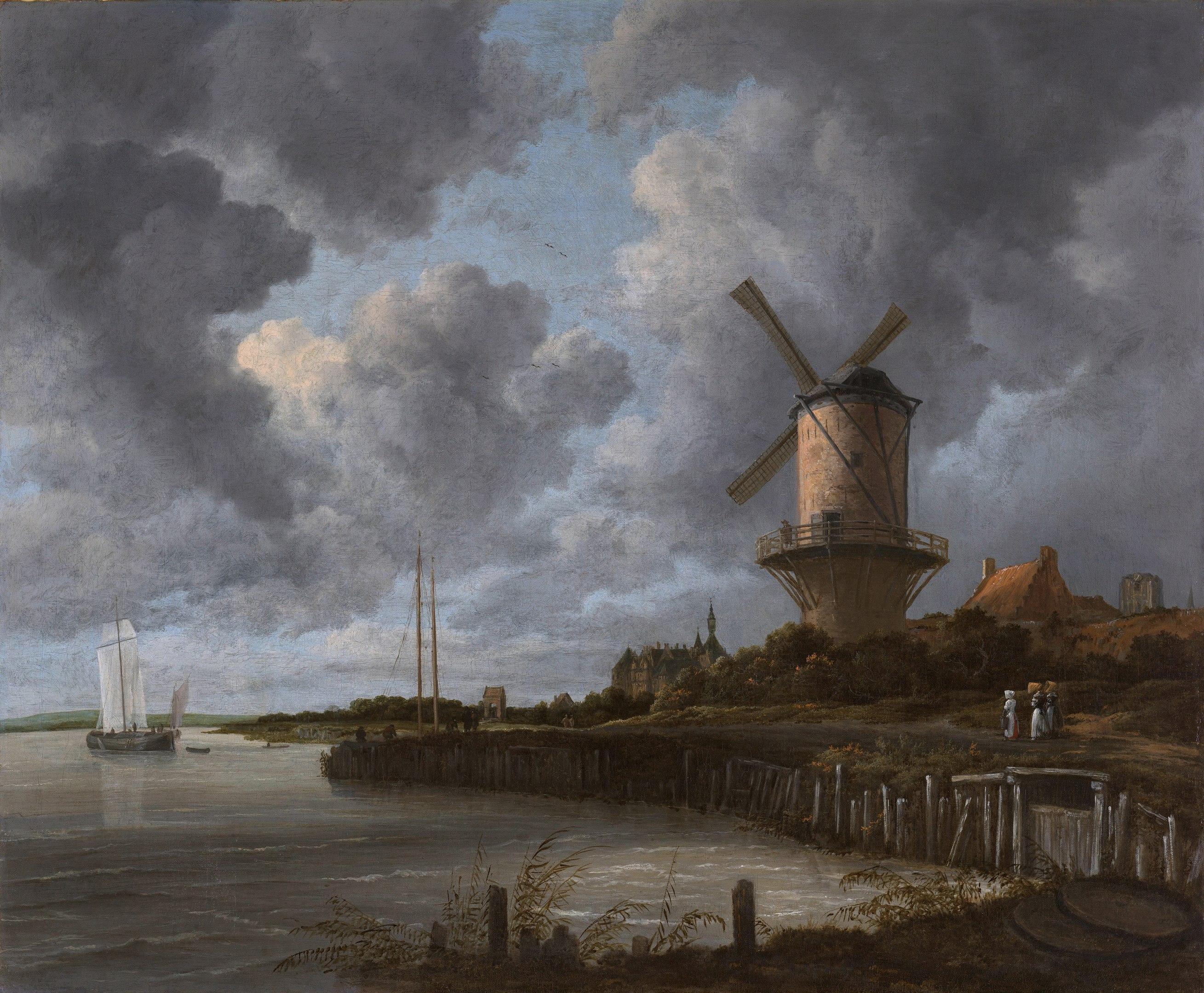
The Dutch Golden Age brought about some of the greatest paintings in all of art history. From lush still lifes to sweeping seascapes, intimate domestic moments and jostling group portraits, the work of the Dutch masters has inspired painters for centuries. While Rembrandt and Vermeer remain perhaps the most famous painters of the era, there are a plentitude of other artists worth remembering.
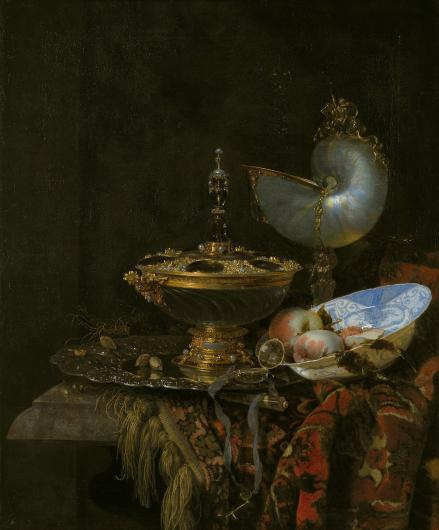
Pronk Still Life with Holbein Bowl, Nautilus Cup, Glass Goblet and Fruit Dish, 1678. Oil on canvas.
The late-sixteenth to mid-seventeenth century was a period of global leadership for the Dutch. The combined forces of superiority in science, the military, global trade, and art, made the Dutch the most powerful economic and cultural force in the world in this era. All of these factors are reflected in the painting of the Dutch Golden Age. Willem Kalf’s (1619–1693) magnificent still lifes showcase the opulence available at the time–pronk means ostentatious, or to show off, and in this painting, with its Chinese porcelain and gilded dish, the fine goods of the wealthy are beautifully on display.
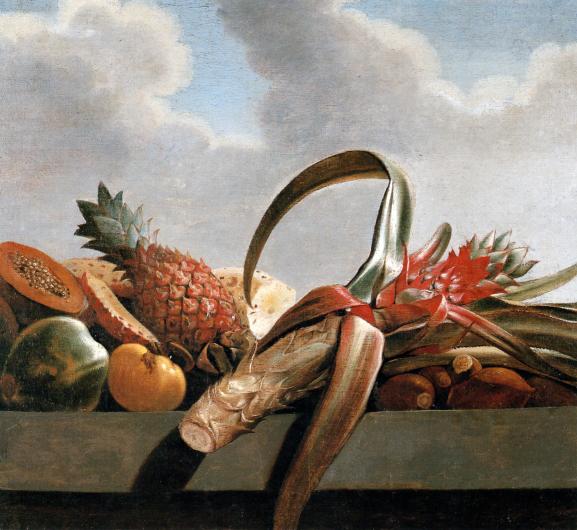
Pineapple, papaya and other fruit, 17th century. Oil on canvas.
Albert Eckhout (c. 1610–1665) brought this still life tradition with him to the New World. Traveling in the entourage of the Dutch governor-general of Brazil, Eckhout was one of the first artists to send images of the Brazilian natives back home to the Netherlands. Using the same sensibilities as other Dutch still-life painters, Eckhout captured the exotic fruit and flora of South America, images which would have hung in the home as symbols of a family’s worldliness.
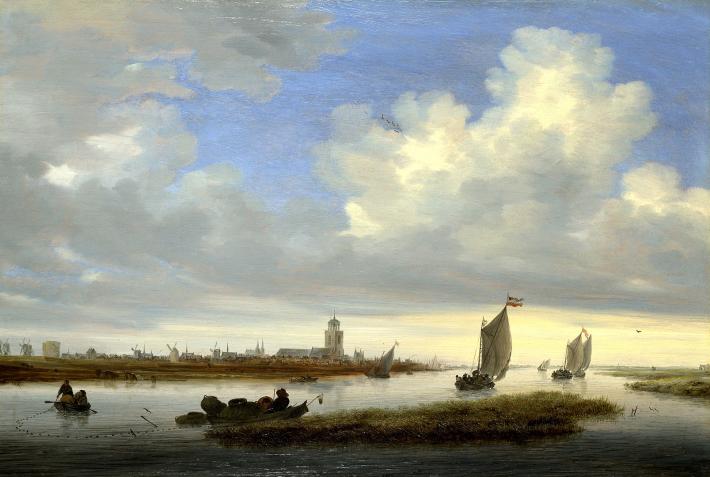
View of Deventer Seen from the North-West, 1657. Oil on oak.
The Netherlands could not have risen to prominence without the prowess of the Dutch navy, who established colonies in the New World and kept trading routes safe. Thus many painters paid tribute to the sea, the shipping industry, and naval fleet through their art. This Salomon van Ruisdael (c. 1602–1670) landscape shows the great ships the country relied on set against a classic pastoral Dutch scene.
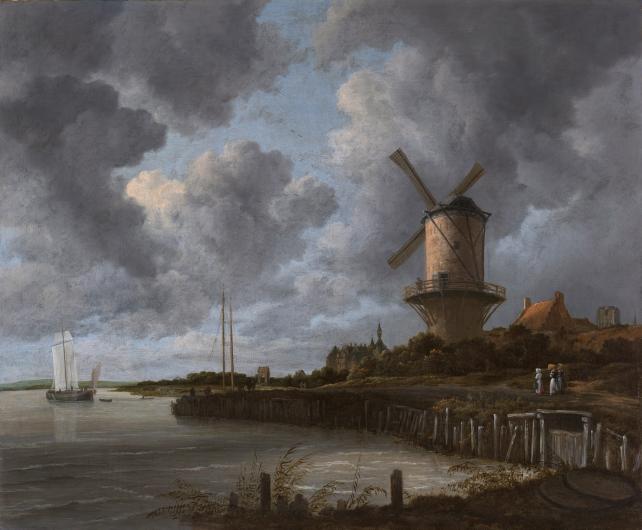
Windmill at Wijk bij Duurstede, c. 1670.
Another typical Dutch scene comes from Jacob van Ruisdael (c. 1629–1682), the nephew of Salomon van Ruisdael, and the most famous landscape painter of the time. Throughout much of art history, painting was a trade that was shared in a family, and Jacob’s father and cousin were also in the family business. The drama of his landscapes would inspire many artistic movements, including the Barbizon School and the Hudson River School, amongst others.
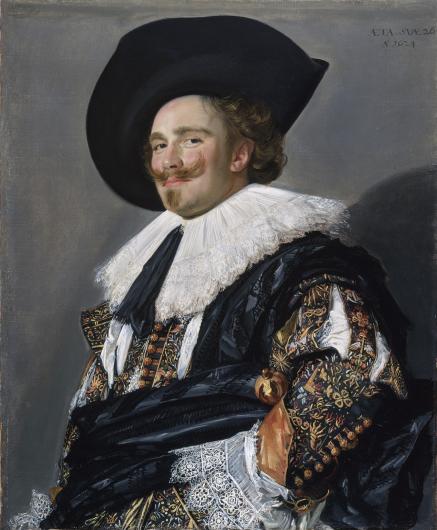
The Laughing Cavalier, 1624. Oil on canvas.
The wealthy and prestigious families of Holland of course needed their portraits painted, and none was so skilled and famous at that than Frans Hals (1580–1666). His Laughing Cavalier (1624) is said to be the very greatest baroque portrait. The image shows the jovial personality of the sitter, rare for portraits, while letting the opulence and intricacy of his garb, expertly depicted by Hals, show off his wealth and achievement.
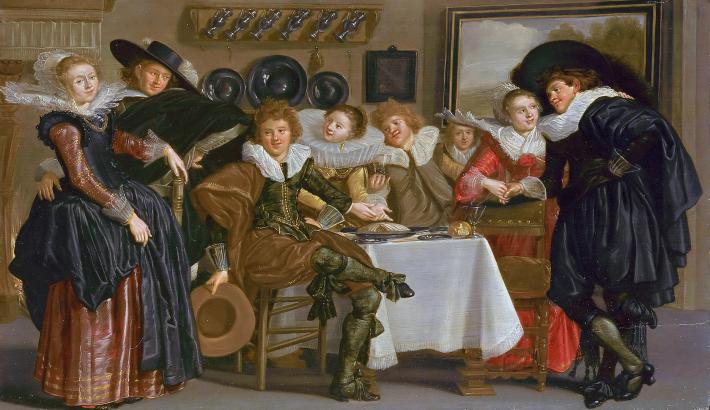
Merry Company, 1635.
While Frans Hals painted many formal, seated portraits and group portraits of militia, his younger brother, Dirck Hals (1591–1656), used his love of portraiture to bridge genres. He specialized in vibrant group portraits, known as “merry company” scenes. These paintings had elements of both boisterous group portraits and quiet moments of home life, depicting informal moments that showed the celebratory atmosphere of the lavish balls, dinners, and festivals of the time.

A Game of Tric Trac, 1630. Oil on panel.
The most famous female artist of the era, Judith Leyster (1609–1660), specialized in smaller genre scenes that showed moments of everyday life. A Game of Tric Trac (1630) in one such scene, capturing the excitement and camaraderie of a simple game, the drama amplified by dramatic baroque lighting coming from a single flame.
Chandra Noyes
Chandra Noyes is the former Managing Editor for Art & Object.























